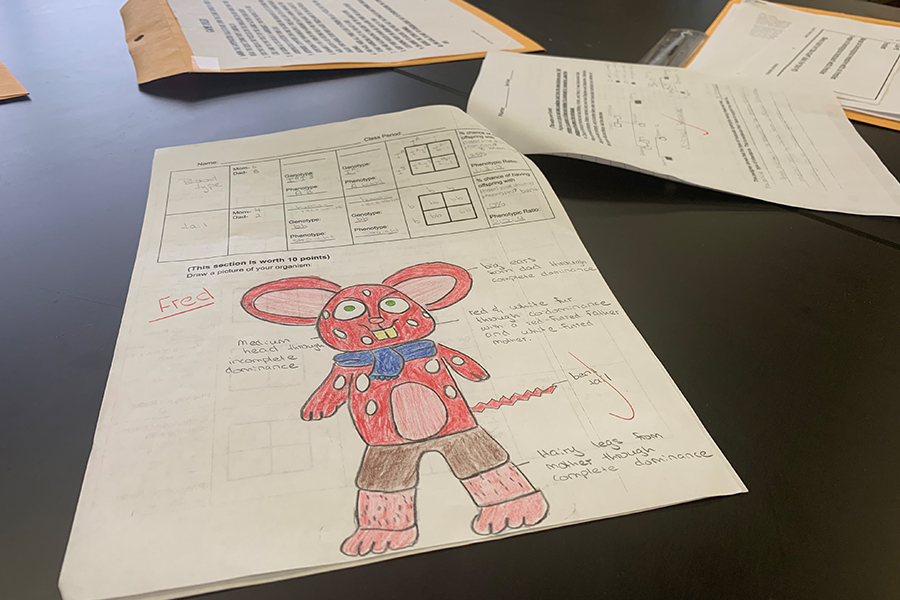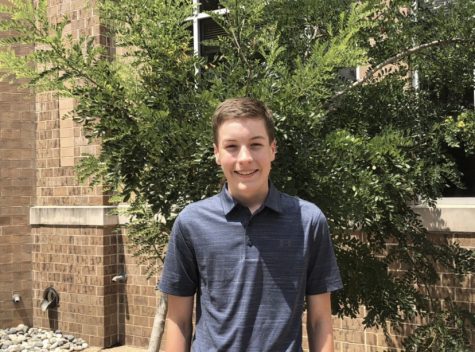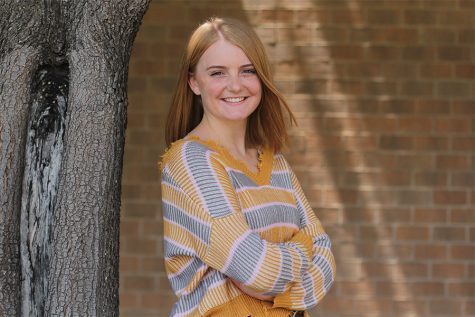Creating their own creature
Putting emphasis on inheritance and traits, freshman biology was assigned a new project where they got the chance to create a unique creature.
January 29, 2020
Learning about genetics and the traits that makes humans different from one another, Mattison Cantrell’s biology class just created their own unique creature.
“The students needed to create their own organism with six different traits. Each student had to make a trait that was representative of each pattern of inheritance,” Cantrell said. “I hoped that by applying each of the types of inheritance the students would have a better understanding of each type of inheritance.”
With the opportunity of unlimited creativity, freshman Zeke Rubio wanted to make his own special kind of creature.
“I made a creature called a “halflings”, it’s like a hobbit with pointy ears, large feet and curly hair. I used the charts to determine the inherited traits like hair and eye color,” Rubio said. “I think this project greatly improved my understanding of how everyone looks different and how we can see the traits our parents have.”
The class must determine six traits, five of which is up to the student to decide. They must also provide the type of inheritance of the trait, such as incomplete, multiple alleles, or codominant.
“I wanted to do this project so that students could practice, ask questions about, and apply each type of inheritance,” Cantrell said. “Genetics is important because it allows students to have an understanding of how diseases and traits are passed on.”
Like Rubio, Isabelle Raade uses this project to get creative and make something new and different.
“I created a green cat, with one crooked leg, glowing red eyes, and a huge body,” Raade said. “I like that with this project we got to create our own creature and it could be whatever we wanted.”
With all the news of the recent disease Coronaviruses disease outbreak from China, Cantrell is sure that knowing genetics will be beneficial to students later on in life.
“By creating the project each student has to critically think about the trait and genes involved,” Cantrell said. “They can have an informed thought process when they are bombarded with fake news about certain syndromes and diseases.”








